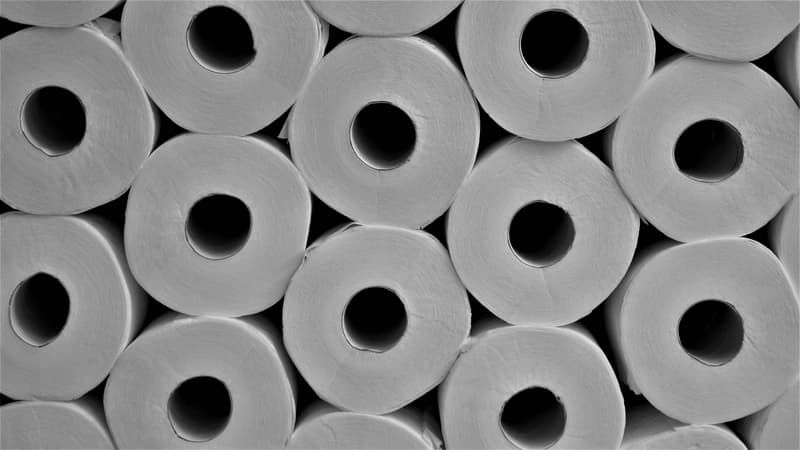Toilet paper represents an unexpected and “potentially significant” source of PFAS, the health-hazardous chemicals called “eternal pollutants” that seep into wastewater and soils around the world, according to a study published Wednesday in Environmental Science & Technology Letters magazine. .
Perfluorinated (PFC) and polyfluoroalkyl (PFAS) compounds are a family of synthetic chemical compounds created beginning in the 1940s, comprising more than 4,700 molecules. They owe their nickname to their very long life cycle.
Present in many everyday objects (cosmetics, nonstick cookware, waterproof clothing, etc.), they have been associated with various types of cancer, cardiovascular disease, fertility problems, and developmental disorders in children.
Chemicals during creation?
Les chercheurs de l’étude ont collected between November 2021 and August 2022 des rouleaux de papier toilette vendus en Amérique du Nord, en Amérique latine, en Afrique et en Europe occidental, even if the échantillons d’eaux used come from stations d’épuration In the U.S.
They discovered the presence of potentially carcinogenic “disubstituted polyfluoroalkyl phosphates” – or diPAPs – compounds that can be converted into more stable PFASs such as perfluorooctanoic acid.
This discovery of PFAS in toilet paper is explained by the fact that some manufacturers add chemicals during the transformation of wood into paper pulp, traces of which persist in the final product. Recycled toilet paper may also be made from fibers from PFAS-containing materials, the study says.
These measurements were then compared with data from other studies on PFAS levels in wastewater and toilet paper use per capita in various countries. The study concludes that toilet paper was the source of about 4% of diPAPs detected in the United States and Canada, 35% in Sweden, and up to 89% in France.
A “must have” to reduce the presence of PFAS
The differences between countries, and particularly in North America, derive from the fact that other products, such as cosmetics, textiles or food packaging, are responsible for the presence of PFAS in wastewater.
The researchers stress that it is “essential” to reduce their presence in wastewater, “commonly reused for irrigation and/or amenity” and therefore likely to lead to human and environmental exposure to PFAS.
The European Chemicals Agency (ECHA), seized by five EU countries in mid-January, will assess a proposal to ban PFAS by 2026.
Source: BFM TV


